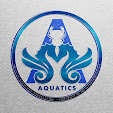Right whale
මෙම තල්මසුන් විශේෂය මෙලෙස හැඳින්වීමට හේතු වූයේ අතීතයේ මිනිසුන් මොවුන් දඩයම් කිරීම සඳහා සුදුසුම තල්මසුන් විශේෂය ලෙස සැලකීමයි. එයට හේතු වූ කරුණු කීපයකි;
- මෙම විශේෂය වෙරළට ආසන්නයේ දැකගත හැකිවීම
- අඩු පිහිනුම් වේගයක් තිබීම
- මියගිය පසු ඔවුන්ගේ පාවෙන සිරුරු පැහැදිලිව දැකිය හැකි වීම
- ඔවුන්ගේ සිරුරු තුලින් ලබාගත හැකි තෙල් ප්රමාණය අධික වීම
මෙවැනි හේතූන් නිසා මෙම තල්මසුන් විශේෂය වද වීමේ අවදානම් කලාපයට ඇතුලු වන තුරුම මිනිසුන් විසින් දඩයම් කරනු ලැබුවා.

මෙම තල්මසුන් වර්ගීකරණය කරන්නේ කෙසේද?
තල්මසුන් යනු සාගරය තමන්ගේ නවාතැන ලෙස භාවිතා කරනා ක්ෂීරපායී සත්ව විශේෂයකි. ඔවුන් පොදුවේ Cetaceans ලෙස හඳුන්වනු ලබනවා.
මෙම Cetaceans නැවත දත් ඇති නැති බව අනුව ආකාර දෙකකි. Right තල්මසුන් විශේෂයේ දත් පිහිටා නැති අතර ඔවුන් පෙරා බුදින්නන් (filter feeders) ලෙස හඳුනාගෙන ඇත.
මෙම තල්මසුන් විශේෂ කොපමණ ප්රමාණයක් දක්නට ලැබෙනවාද?
Right whale විශේෂ 3 ක් ලෝකය වටා මුහුදු කලාප තුල දක්නට ලැබෙනවා.
- Southern Right Whales (Eubalaena australis)
- North Atlantic Right Whales (Eubalaena glacialis)
- North Pacific Right Whales (Eubalaena japonica)
මෙම තල්මසුන් විශේෂ තුල බාහිරව වෙන්කර හදුනාගත හැකි, කැපී පෙනෙන ලක්ෂණ නොමැති වුවත් ඔවුන් තුල ජානමය සහ සංරක්ෂණ මට්ටම් වල වෙනස්කම් පවතී.
මේ අතරින් Southern right whale විශේෂය හදුනාගැනීමේ ලක්ෂණ කිහිපයක් ඇත.
එනම්, ඔවුන්ට තරමක් මහතින් යුතු කලු පැහැති සිරුරක් හිමිය. ඔවුන්ට පෘෂ්ඨිය වරල් පිහිටා නොමැති අතර V හැඩැති හොටයක් පිහිටා ඇත. ඔවුන්ගේ වලිගය පළල් ලෙස පිහිටා ඇති අතර සුමට දාරයකින් සමන්විතය. එමෙන්ම අසමාන හැඩැති සුදු පැහැති පුල්ලි වැනි සලකුණු ඔවුන්ගේ උදරයේ හා පපු ප්රදේශයේ පිහිටා ඇත.
මෙම සියලුම තල්මසුන් විශේෂයන්හි සමෙහි callosities ලෙස හදුන්වන කැලල් ආකාරයක් පිහිටා ඇත. බොහෝ විද්යාඥයින් මෙම කැලල් වල පිහිටීම සහ ස්වරූපය ඔවුන් හඳුනාගැනීම සදහා යොදා ගනු ලබයි.
මෙතරම් විශාල සිරුරු හිමි තල්මසුන්ගේ ආහාර කොපමණ කුඩා ද?
මෙම තල්මසුන් බහුල වශයෙන් ආහාරයට ගන්නේ සත්ව ප්ලවාංගය (copepoda & krill). ඔවුන් ඔවුන්ගේ විශාල මුඛය අර්ධ ලෙස විවර කරගනිමින් ඉතා විශාල ප්ලවාංග පොකුරු හරහා මතුපිට ජල මට්ටම් වල පිහිනනු ලබනවා. එවිට මෙම ප්ලවාංග ඔවුන්ගේ දත් නොමැති හකු හරහා (baleen plates) ඔවුන්ගේ මුඛය තුලට ගමන් කරනු ලබනවා. එලෙසම මෙම තල්මසුන් සාගර පතුල ද තමන්ගේ ආහාර සපයා ගැනීමට භාවිතා කරනු ලබනවා.
මෙම තල්මසුන් විශේෂ දක්නට ලැබෙන්නේ ලෝකයේ කවර රටවල් වලට අයත් සාගර කලාපවල ද?
- Southern Right Whale - ඇන්ටාට්කාව, ආජන්ටිනාව, ඕස්ට්රේලියාව, බ්රසීලය, ප්රoශය, මැඩගස්කරය, නවසීලන්තය, දකුණු අප්රිකාව
- North Atlantic Right Whale- බර්මියුඩාව, කැනඩාව, ග්රීන්ලන්තය, අයිස්ලන්තය, අයර්ලන්තය, නෝර්වේ, එoගලන්තය
- North Pacific Right Whale- ජපානය, රුසියාව
මෙම සියලුම තල්මසුන් විශේෂවල කුඩා පැටවුන්ගේ වාසස්ථාන පිහිටා ඇත්තේ මහද්වීපක තටාකයේ වෙරළ ආසන්නයේ ඇති නොගැඹුරු ජලයේය.
ඔවුන්ගේ සංක්රමණික රටා
සාමාන්යයෙන් මොවුන් ඔවුන්ගේ ග්රීෂ්ම ඍතුවේ ආහාර ලබාගන්නා භූමි ප්රදේශ හා සීත ඍතුවේදී පැටවුන් බෝ කරනා භූමි ප්රදේශ අතර ඍතුමය සංක්රමණික රටා පෙන්වනු ලබයි. උදාහරණයක් වශයෙන් southern right whale විශේෂයේ ග්රීෂ්ම ඍතුවේ අාහාර ලබාගන්නා වාසස්ථාන වනුයේ ඇන්ටාටිකාව වටා පිහිටා ඇති උප ධ්රැවීය සාගර කලාපය වන අතර ඔවුන්ගේ සීත ඍතුවේ වාසස්ථාන වනුයේ දකුණු ඇමෙරිකාවේ දකුණු වෙරළ තීරය වටා ඇති සාගර කලාපයයි.
මොවුන්ගේ පැවත්මට ඇති ප්රධාන තර්ජනය?
මිනිස් ක්රියාකාරකම් අද වන විට මොවුන්ගේ පැවැත්මට ප්රධාන තර්ජනයක් වී ඇත. මේ අතරින් ප්රධානම හේතු වන්නේ
- මාලු දැල් හා අනෙකුත් ධීවර ආම්පන්න වල මොවුන්ගේ සිරිරු පැටලීම
- නෞකාවල ගැටීම
- මිනිස් ක්රියාකාරකම් නිසා සිදුවන කාලගුණික වෙනස්වීම්
- විවිධ කටයුතු සදහා සාගරයේ ක්රියාත්මක වන යන්ත්ර වලින් පිටවන අධික ශබ්ද වලින් සිදුවන ශබ්ද දූෂණය
මෙවැනි හේතුන් නිසා ඔවුන්ගේ වාසස්ථාන විනාශ වීම, ආහාර හිඟ වීම, ධීවර ආම්පන්න නිසා ඔවුන්ගේ ශරීරයට හානි සිදුවීම (මෙවැනි ආසාදන මරණයට පවා හේතු වේ), අධික ශබ්ද දූශණය නිසා ඔවුන්ගේ හැසිරීම් රටා වෙනස් වීම හා සන්නිවේදනයට බාධා වීම වැනි අහිතකර ප්රතිඵල ඇතිවිය හැක.
මොවුන් සංරක්ෂණයට ගෙන ඇති ක්රියාමාර්ග?
මූලික වශයෙන් මොවුන්ට ඇති තර්ජන හඳුනාගැනීමට පහත පියවර ගෙන ඇත. එනම්,
- ඔවුන්ගේ සංක්රමණික මාර්ග හරහා වැටී ඇති නාවික ගමනාගමන මාර්ග හඳුනාගැනීම හා වාර්තා කිරීම
- ගුවන් සමීක්ෂණ මඟින් මොවුන්ගේ වාසස්ථාන වල දත්ත ලබාගැනීම
- මෙම තල්මසුන් විශේෂය පිලිබඳව මිනිසුන් දැනුවත් කිරීම
- ඔවුන්ගේ වාසස්ථාන ඇති සාගර කලාප වල ගමන් ගන්නා නෞකාවල වේගය පාලනය කිරීම
- ඔවුන් ජීවත් වන ප්රදේශ වල සිදු කරන ධීවර කටයුතු සීමා කිරීම, එම ප්රදේශ වල ජලයේ ස්ථාපිත කර ඇති මාලු දැල් සීමා කිරීම
- එම ප්රදේශ වල හානිය අවම ධීවර ආම්පන්න භාවිතා කිරීම වැනි පියවරයන් ය.
මෙම තල්මසුන්ගේ සාගර කලාප වල ව්යාප්තිය හඳුනාගැනීමට විවිධ ක්රම භාවිතා කරයි. ඒ අතරින්; ඔවුන්ගේ ඡායාරූප සංසන්දනය කිරීම, ඔවුන් ජලය තුලින් ඉහළට මතුවන අවස්ථා ගණනය කිරීම (sightings data) (එම අවස්ථාවේ දිනය, වේලාව,ස්ථානය , ආදිය සටහන් කර ගැනීම)
යන ක්රම අද වන විට වඩා ප්රචලිත වී ඇත.
ඡායාරූප සංසන්දනය මඟින් මොවුන්ගේ ව්යාප්තිය, චලන රටා, ජනගහනයේ වෙනස්කම් යනාදිය හදුනාගැනීමට හැකිය. මෙම ක්රමයේදී ඔවුන්ගේ සිරුරේ පිහිටා ඇති 'Callosity' රටා ප්රධාන වශයෙන් භාවිතා කරනු ලබයි.
මෙහිදී කලින් හඳුනාගත් විශේෂ නැවත ගණනය වැලැකීම සඳහා මොවුන්ගේ දත්ත ගොනු ගබඩා කර තබාගනු ලබයි.
වර්තමානය වන විට මෙම තල්මසුන් විශේෂය පිළිබදව ලෝකයේ බොහෝ රටවල් අවදානය යොමු කර ඇති අතර ඔවුන් තවත් ලෝකයෙන් වඳ වී ගිය සත්ව විශේෂයක් නොවෙන්නට අප වගබලා ගත යුතුය.
රචනය: ශෂිනි විජේකෝන්
මූලාශ්ර:
https://www.nationalgeographic.com/animals/mammals/group/right-whales/
https://www.fisheries.noaa.gov/species/north-atlantic-right-whale
https://oceanservice.noaa.gov/facts/rtwhale.html
https://www.worldwildlife.org/species/north-atlantic-right-whale
https://uk.whales.org/whales-dolphins/how-we-help/saving-the-endangered-north-atlantic-right-whale/



































